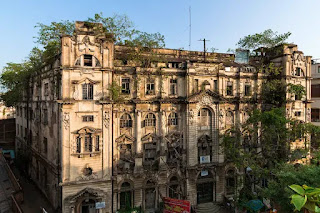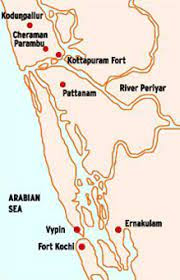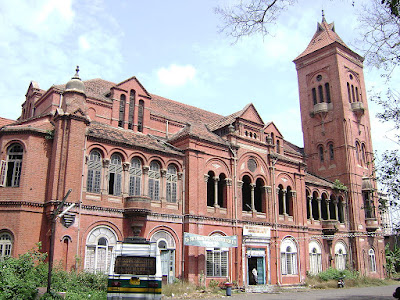I presume no other country in the world has a vast number of heritage structures, monuments, temples, churches, mosques, palaces, forts, etc as India has. Reason: In the past India was ruled by rulers of various dynasties across the country, besides Muslim rulers from NW of India and European colonial powers, most importantly the British who stayed here from the middle of 18th century till 1947. Their contribution to architecture, culture, traditions, education, etc., is equally impressive., notwithstanding their greed for Indian rulers lands, exploitation of Indian lands etc. Mind you they made a bundle by making opium in India and exporting it in vast quantity to China. One third of the Chinese population became zombies because of narcotic addition!!
If you sit down and prepare a book on Indian history chronologically without leaving even a modicum of information, it will runs into several thousand pages, an impossible task. We are connected with our past history only through buildings temples, artifacts, vestiges of various kinds, left behind by our forefathers. If the connectivity with the past era is broken or suddenly snapped midway by way of losing old monuments, structures and others connected with persons or historic events, etc., the posterity has to be content with holes in the history. The missing connectivity can not be reestablished or restored.
This is what is happening in cities like Kolkata, Chennai, Mumbai Delhi and other towns and villages that are doted with a myriad of monuments that remain uncared for and wantonly neglected mainly because of red tape lethargic attitude of bureaucratse. Kolkata has the highest number of colonial structures, many of which carry heritage tag. It is home to about 1,000 heritage monuments in the Municipal Corporation area where new construction or renovation is governed by strict laws. No doubt the city is an architectural trove; so are Chennai and Mumbai.
Lack of funds, official apathy, carelessness, poor implementation of conservation laws, irresponsible attitude of the real estate companies, uncooperative public and a host of other factors make the old structures disappear one by one over a period of time. Demolition of heritage structures takes place at an alarming rate in Kolkata. In Chennai a few structures were recently saved from near demolition. In the past buildings like Gokhale Hall on Armenian street, Victoria Town hall, SBI branch office building on Anna Salai were facing demolition. The heritage lovers were quite angry.
 |
| rotting heritage structure, Kolkata. rediff.com/ |
 |
| Oriental ins, co kolkata.lbb.in/kolkat |
 |
| oriental Ins, co lbb.in/kolkat |
Above image: This Stunning 1914 building in Kolkata that housed The Oriental Insurance co. Razed to the ground to build a modern bldg..
 |
| Kolkata, a heritage bldg. in ruins.thestatesman.com |
 |
| Kolkata building. timesofindia.indiatimes.com |
 |
| heritage house, Kolkata. imesofindia.indiatimes.com |
Above image: An old house in south Kolkata owned by a scholar in Sanskrit one Gurupada Haldar.........
South Kolkata, primarily a residential area has many old buildings big homes, mansions (built in the 1920s or 1930s) once owned by rich land lords and traders who were close to the seat of power under the English company. Being affluent in the past era, they had countless neo-classical mansions built with rich embellishment on huge lands. In the present-day scenario either in Kolkata or elsewhere like Mumbai, Chennai or Bangalore, old 2 or 3 story lime-brick masonry buildings with quality wooden doors, etc., are curios.
Good news is Bengalis have better awareness about preserving the past history of the city and have made some progress unlike Tamil Nad where awareness is slowly gaining ground. The ruling governments in the past decades have been insensitive to conservation of heritage buildings. In Kolkata in the recent past the Currency Building (1833), the Belvedere House (prior to 1838), and Metcalfe Hall (1840s) were brought back to old splendor by the ASI and the state govt. was cooperative.
Calcutta Architectural Legacies (CAL), a citizen's initiative is moving in the right direction to save the old structures, be they architecturally big or small. ''Working towards protecting entire heritage zones rather than a few impressive structures of the colonial era'' is a good proportion.
 |
| Muziris heritage tourism, Kerala. /muziristour.com/ |
The popular Muziris Heritage Project of Kerala, one of the biggest conservation projects in India, aims to conserve a rich culture that is as old as 3000 years or more. The central and state government come together for a common cause to preserve and promote tourism in the region. The heritage tourism circuit between North Paravur in Ernakulam and Kodungallur in Thrissur covers a variety of structures. Temples, forts, palaces or kottarams, seminaries, cemeteries, boatyards and markets, etc. Incorporated in it is non-physical aspect of the Muziris region that will come under under the process of conservation.
Fort Area Heritage Zone, TV..Puram, Kerala.ownplanning.kerala.gov.in
Like wise the Kerala state government is promoting restoration of countless old heritage palaces and mansions in the Fort area of Thiruvananthapuram close to the famous Padmanabha Swamy temple. The Fort area is a Heritage Zone.
 |
| timesofindia.indiatimes.com |
Above image: Iconic Victoria students' Hostel, Triplicane - a fine grade I heritage colonial structure in Chennai (121 year old) in a run-down condition. No remedy as of today?
 |
| Head office of Binny & co demolished, Chennai timesofindia.indiatimes.com |
Above image: Famous Binny Mill company. .200-year old Binny Mills headquarters on Armenian street in Parry’s was razed to the ground in 2017. Reason: TN Commission heritage laws 2012 - notification was not done properly. Three structures were pulled down between 2017-18. The Padmanabhan committee identified 464 heritage structures. Countless structures left out by the committee may be axed for good because HCC (Heritage Conservation Commission) can not take legal action on structures not included in the list.....................
 |
| Victoria Town Hall, Chennai, not yet restored. wikiwand.com |
 |
| Chennai P.ORR & sons bldg. not restored. akshmisharath.com |
 |
| Chennai Bharat Ins.co bldg. not yet restored.akshmisharath.com |
 |
| Chennai Bharat Ins.co bldg. not yet restored pinrest.com |
Heritage structures need strict laws to protect them and the success lies in strict enforcement of laws by the authorities, cooperation from the public, release of reasonable funds by the ruling governments and erecting a strong fence around the structures in urban areas and also in isolated areas to prevent trespassing and pilferage.


.jfif)



.jfif)




